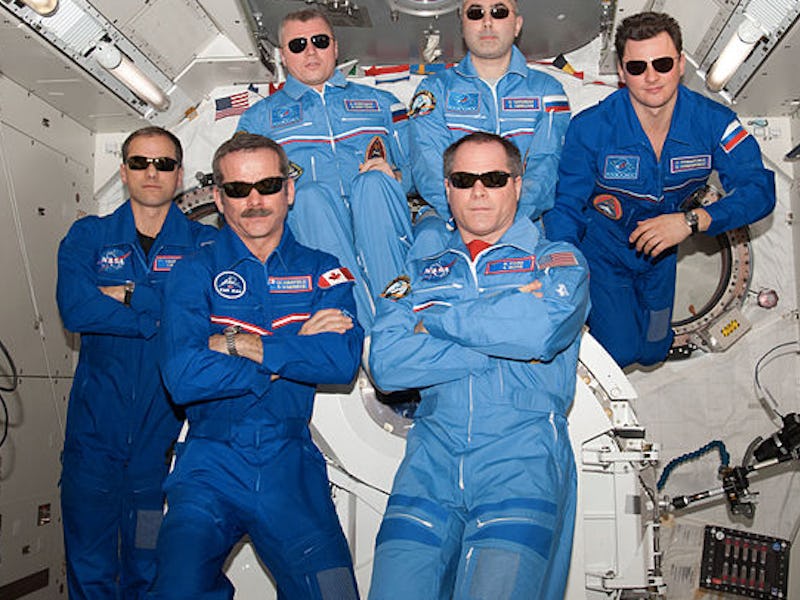On Monday, SpaceX announced plans to send two private citizens on a weeklong cruise around the moon in 2018. Despite the view, these bougie tourists probably won’t want to stay up there much longer than that. There’s a steady flow of evidence showing that prolonged space travel seriously deteriorates the eyes of astronauts. However, a solution may be on the horizon: On Monday, NASA announced that it’s funding a team of American scientists determined to preserve the vision of people voyaging deep into space.
Some astronauts have experienced a gradual change in farsightedness: Their retinas develop folds, which causes a swelling of the optic disk and in the optic nerve sheath. In 2005, astronaut John Phillips returned to Earth after six months in space with vision that had gone from 20/20 to 20/100. And in the summer of 2016, Scott Kelly returned from his year in space with a smaller heart, a shorter stature, and worse vision than ever before. NASA research has found that 80 percent of astronauts on long-duration missions have eye damage, which can last up to five years after landing back on Earth.
NASA astronaut Chris Ferguson has an eye examination at the Johnson Space Center.
What sets the new project apart from previous research is the fact that it focuses on computational modeling as a means to investigate eye abnormalities in astronauts. The leading explanation for these issues is a theory called “visual impairment intracranial pressure syndrome,” which suggests that weightlessness in space might cause pressure changes in the brain and spinal fluid. While this theory is the leading explanation for the strange syndrome, it hasn’t actually been confirmed to be true. NASA’s new project hopes to clarify the causes of optical damage in space so researchers can develop tools to stop this process.
“We know that, if astronauts are in space for extended amounts of time, they have a higher propensity for developing pathologies similar to increased intracranial pressure,” project collaborator Brian Samuels, M.D., said in a statement. “We are trying to incorporate all of the existing clinical and research data into functional computational models of the eye itself, the central nervous system, and the cardiovascular system to determine how they are interacting.”
Why do Phillips and Kelly have vision damage while earlier crews of the best and brightest astronauts do not? It’s likely because they are simply spending more time in space. In the mid-2000s, astronauts usually spent about two weeks on the International Space Station. Now, they may stay there for six months or more. Knowing how to alleviate eye damage will become especially important as people to travel to and colonize Mars: Getting there will take at least half a year.
“Given that one of NASA’s primary goals is to send someone to Mars, this will be the longest amount of time humans have spent in space thus far,” says Samuels. “If we are able to identify risk factors that might predispose someone to these types of issues in space, the computational models could become a screening tool for future astronauts.”
